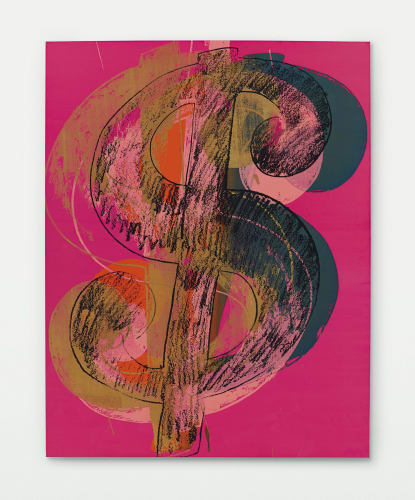Andy Warhol's dollar sign paintings and prints stand as vibrant testaments to his fascination with the intersection of art and commerce. In the early 1980s, Warhol turned his keen eye towards the ubiquitous symbol of wealth and power—the dollar sign. What emerged from his exploration was a series of artworks that both critiqued and celebrated the pervasive influence of money in society. Warhol's dollar sign works are characterized by their bold colors, repetitive motifs, and stark compositions. Using his trademark technique of screen printing, he transformed the mundane symbol into a potent icon of contemporary culture. Each dollar sign painting or print is meticulously rendered, yet retains an air of detachment—a reflection, perhaps, of Warhol's own ambiguous relationship with wealth and consumerism. Through these artworks, Warhol invites viewers to ponder the symbolic meaning behind the dollar sign. Is it a sign of prosperity, aspiration, or superficiality? Or does it represent something more profound about the human condition and our relentless pursuit of material wealth? Beyond their visual impact, Warhol's dollar sign paintings and prints also serve as a commentary on the commodification of art itself. By elevating a symbol of monetary value to the realm of high art, Warhol challenges traditional notions of artistic subject matter and invites viewers to reconsider the boundaries between art and everyday life. Today, Andy Warhol's dollar sign series continues to resonate with audiences around the world, offering a timeless exploration of money, power, and the enduring allure of symbols in contemporary society. As we contemplate these works, we are reminded of Warhol's ability to capture the essence of his era while simultaneously transcending it, leaving behind a legacy that remains as provocative and relevant as ever.

